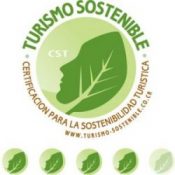Less than 1% of Costa Ricans are of indigenous ancestry. 94% are of European or mestizo ethnicity.
The staples of the Costa Rican diet are rice and black beans, along with bread, chicken or meat, vegetables, salads, and fruits. Rice and beans mixed together for breakfast is called GALLO PINTO.
The average wage laborer is about $10 per day, the highest in Central America.
Costa Ricans refer to themsleves as “Ticos” (males) and “Ticas” (females). Foreigners are often called “Gringos” (males) and “Gringas” (females).
There are 801 miles of coastline in Costa Rica.
Costa Rica is divided into seven provinces; San Jose, Alajuela, Heredia, Cartago, Guanacaste, Puntarenas, and Limon.
There are more than 121 volcanic formations in Costa Rica, and seven of them are active. Poas Volcano has the second widest crater in the world and Arenal is one of the ten most active volcanoes in the world.
Costa Rica hosts more than 5% of the world’s biodiversity even though its landmass only takes up .03% of the planets surface.
Costa Rica’s marine area reaches 580,000 km2, approximately 10 times larger than its land area of only 52,100 km2.
Though Costa Rica has its own currency (the Colon), many stores list prices in terms of US$.
There are about 52 species of hummingbirds in Costa Rica, making Costa Rica a true hummingbird capital.
Monkeys are one of the most common mammals in Costa Rica – next to bats. The four common species are the Howler, Spider, White-Faced and Squirrel.
Bug-phobist look out! There are about 750,000 species of insects that live in Costa Rica, including about 20,000 different types of spiders! Also, more than 10% of the worlds butterflies live here.
Costa Rica is one of the most valued environmental destinations. Approximately 25% of the country has protected forests and reserves. There are more than 100 different protected areas to visit.
Costa Rica has a population of 4.1 million. The capital is San Jose, with a metro area population of approximately 2 million. The life expectancy is almost 77 years, one of the highest in the world.
Costa Rica (slightly smaller than Lake Michigan) is in Central America, bordered by Nicaragua on the north and Panama on the south, the Pacific Ocean on the West, and the Carribean Sea on the East.
The Costa Rican government is democratic, with presedential elections every 4 years, and no standing army.
Costa Rican president Oscar Arias won the nobel Peace Prize for his regional peace plan.
- Costa Rica hosts more than 5% of the world’s biodiversity even though its landmass only takes up .03% of the planets surface.
- Costa Rica’s pacific marine area reaches 625,000 km2, approximately 10 times larger than its land area of only 52,100 km2.
- The staples of the Costa Rican diet are rice and black beans, along with bread, chicken or meat, vegetables, salads, and fruits. Rice and beans mixed together for breakfast is called GALLO PINTO.
- The average wage laborer is about $10 per day, the highest in Central America.
- Costa Ricans refer to themsleves as “Ticos” (males) and “Ticas” (females). Foreigners are often called “Gringos” (males) and “Gringas” (females).
- Less than 1% of Costa Ricans are of indigenous ancestry. 94% are of European or mestizo ethnicity.
- There are 801 miles of coastline in Costa Rica.
- Costa Rica is divided into seven provinces; San Jose, Alajuela, Heredia, Cartago, Guanacaste, Puntarenas, and Limon.
- There are more than 121 volcanic formations in Costa Rica, and seven of them are active. Poas Volcano has the second widest crater in the world and Arenal is one of the ten most active volcanoes in the world.
- Though Costa Rica has its own currency (the Colon), many stores list prices in terms of US$.
- There are about 52 species of hummingbirds in Costa Rica, making Costa Rica a true hummingbird capital.
- Monkeys are one of the most common mammals in Costa Rica – next to bats. The four common species are the Howler, Spider, White-Faced and Squirrel.
- Bug-phobist look out! There are about 750,000 species of insects that live in Costa Rica, including about 20,000 different types of spiders! Also, more than 10% of the worlds butterflies live here.
- Costa Rica is one of the most valued environmental destinations. Approximately 25% of the country has protected forests and reserves. There are more than 100 different protected areas to visit.
- Costa Rica has a population of 4.1 million. The capital is San Jose, with a metro area population of approximately 2 million. The life expectancy is almost 77 years, one of the highest in the world.
- In this land rich of forest, volcanoes and beaches, still live eight different ethnic groups, on both sides of the Atlantic and the Pacific. The indigenous people of Costa Rica are the Gutatuao/Maleku, Chorotega, Huetare/Quitirrisi, Cabecare, Bribri, Terraba, Guaymie, and Boruca. The Boruca ethnic group lives near our location in Uvita and in one of the first reserves that was established for the indigenous Costa Ricans. (Boruca indigenous village). They are popular for their crafts, particularly the masks made for the “Fiesta de los Diablos”, which is a three-day festival featuring fights between the Boruca people (represented as demons) and the Spanish conquistadors (represented as bulls).
- Costa Rica (slightly smaller than Lake Michigan) is in Central America, bordered by Nicaragua on the north and Panama on the south, the Pacific Ocean on the West, and the Carribean Sea on the East.
- The Costa Rican government is democratic, with presidencial elections every 4 years, and no standing army.
- Current Costa Rica’s president is Rodrigo Chaves




